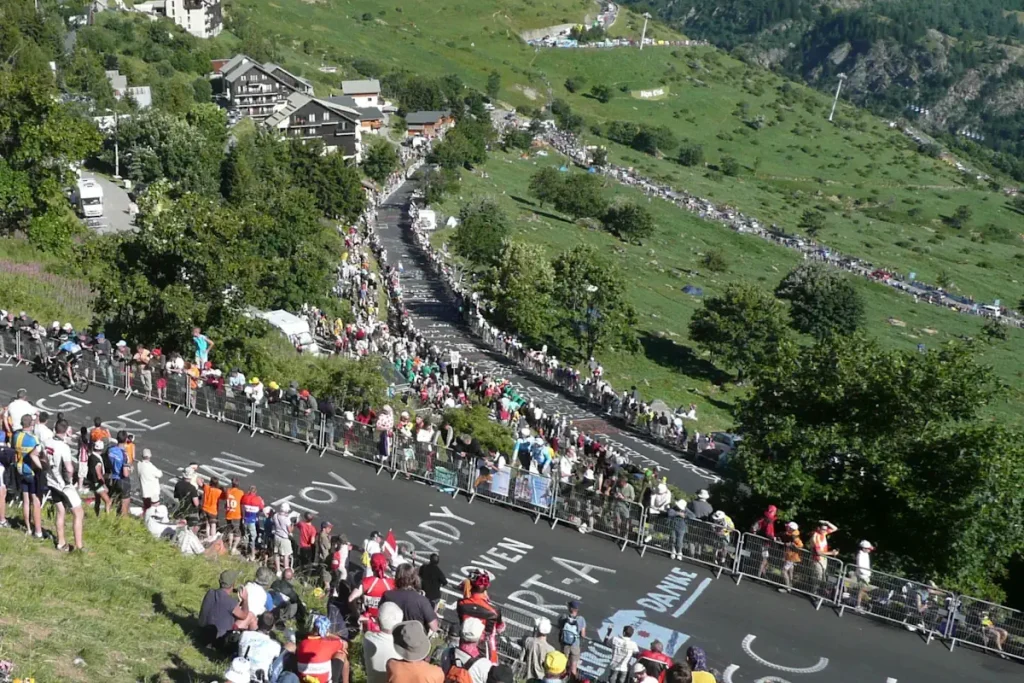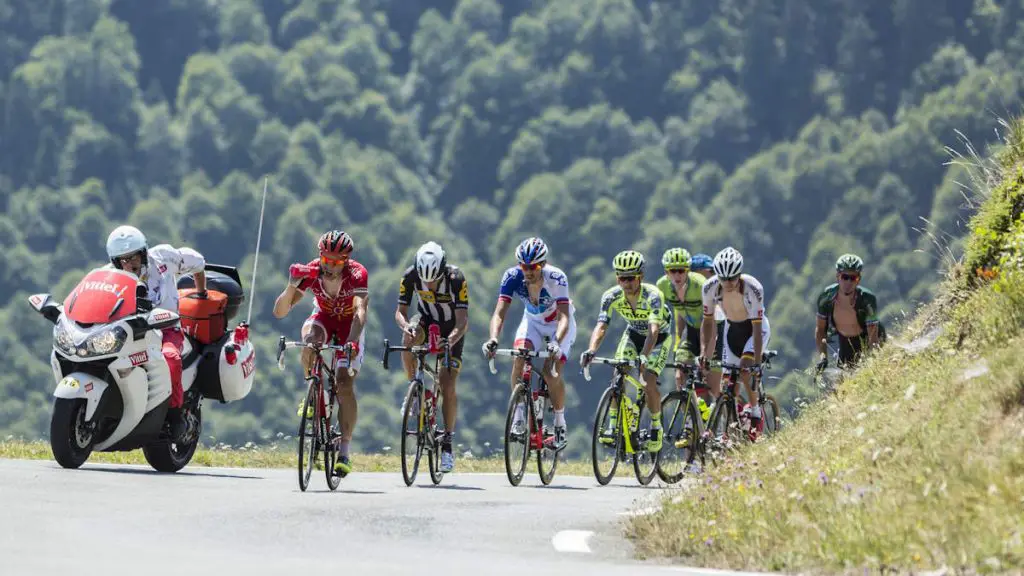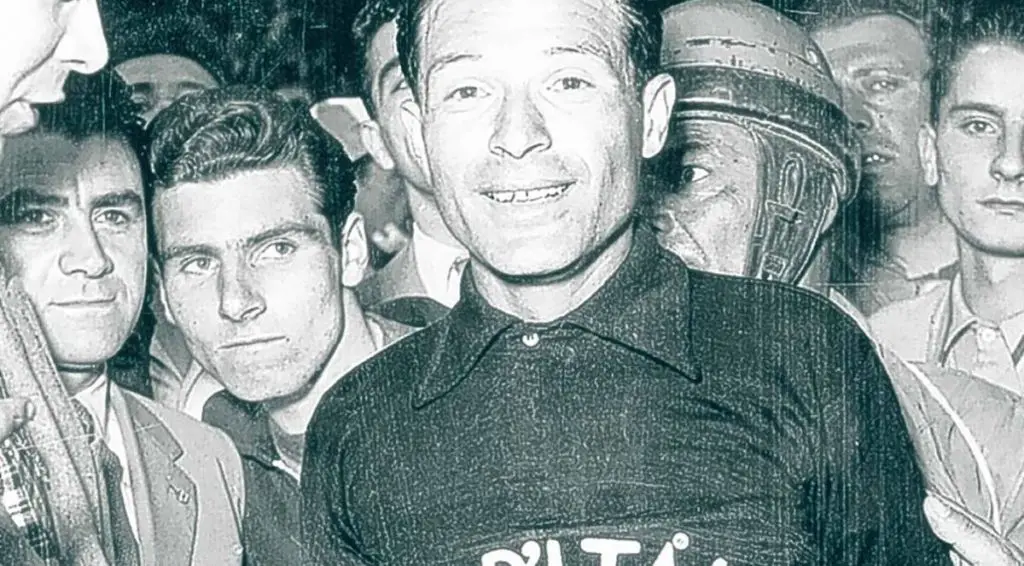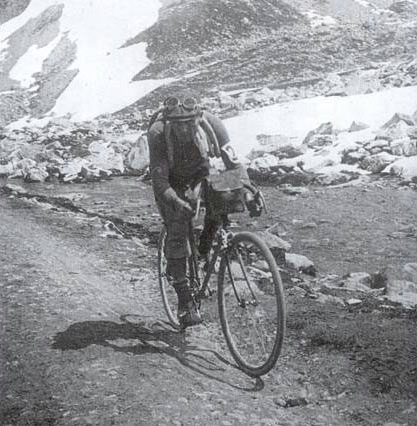As the peloton breezes through quaint villages and over breathtaking mountains, the Tour de France offers a captivating spectacle. Yet, for the uninitiated, the screen is filled with French phrases like “Arrière du peloton” and “Tête de la course”, which can leave viewers puzzled. These terms not only add a dash of cultural flavor but also narrate an intriguing commentary on strategies and endurance. In this article, we’ll unravel the meaning of these French phrases commonly used during the Tour, providing an insider’s view into the drama, tactics, and fierce competition that characterize this iconic cycling race. You’ll soon find these terms as engaging as the race itself, painting a vivid picture of the unfolding athletic saga.
Arrière du peloton
Arrière du peloton literally translates as the “rear of the peloton”. This expression is used to highlight those riders who are currently trailing at the back of the main group, or the peloton. You see this term usually when some riders start getting dropped.
Several circumstances might cause a cyclist to fall into this position: a punishing high speed set by the group, challenging crosswinds that disrupt aerodynamics, or grueling uphill climbs where even the smallest weight and power differences can have a significant impact. In such scenarios, riders might find themselves distanced, either intentionally conserving energy for later stages or simply struggling to keep pace.
Flamme rouge
The “flamme rouge” is a term in the Tour de France that signals a critical point in the race. Translated as “red flame”, it refers to a red flag hanging under an inflatable arch that is placed exactly one kilometer from the finish line. The sight of the flamme rouge sparks a surge of adrenaline among the cyclists as they recognize the approaching conclusion of the stage.
It signifies the beginning of the final, often furious, sprint towards the finish line. For spectators, the flamme rouge ramps up the tension and excitement, as it heralds the imminent climax of the day’s race, where final positions can be won or lost in these last, heart-pounding moments. It is both a beacon and a challenge, encapsulating the drama and thrill of the sport.
Hors catégorie
In the world of the Tour de France, climbs are categorized based on their difficulty, both in terms of their steepness and their length. These range from Category 1, which represents the most challenging ascents, down to Category 4, the comparatively easier slopes. However, some climbs exceed even the Category 1 classification. These formidable feats are labeled as “Hors catégorie” (HC), a French term translating to “beyond category”.
These HC climbs are reserved for the most grueling ascents. Factors determining this label include the climb’s length, steepness, the overall altitude gain, and the point in the stage at which the climb is positioned – with climbs later in a stage generally considered harder due to accumulated fatigue. These HC climbs represent the ultimate test of a rider’s climbing prowess, stamina, and tenacity, and are often where the true contenders for the Tour de France title are revealed.

Lanterne rouge
It translates directly as “red lantern”, a reference to the red light traditionally found at the end of a railway train. In the context of the race, the “lanterne rouge” is not just the rider who is currently last, but the one who ultimately finishes the entire race in the last place.
This title, however, is not necessarily one of disgrace. Completing the Tour de France is an extraordinary feat in itself, given its intense demands. The “lanterne rouge” therefore often becomes a symbol of perseverance and determination, recognizing the rider who, despite adversities, successfully concludes one of the most grueling contests in sports.
Maillot Jaune
“Maillot Jaune”, or “Yellow Jersey“, is arguably one of the most iconic symbols of the Tour de France, and in general, professional cycling. This term, literally translated as “yellow shirt”, refers to the jersey worn by the cyclist who currently leads in the overall, or General Classification (GC), standings of the race. This means that the cyclist wearing the Maillot Jaune is the one with the lowest aggregate time across all completed stages.
The Maillot Jaune is both a prize and a target – a mark of honor for the wearer, but also a beacon drawing the competitive attention of the other racers. Its bright color ensures it stands out in the peloton, symbolizing the prestige and distinction of leading one of the world’s most renowned cycling races. Wearing the Maillot Jaune is a career highlight for any cyclist and is a testament to exceptional performance and endurance.
Parcours
The profile of the race or stage route.
Peloton
The large main group of the race. See: Here’s why cyclists ride in a big bunch [peloton explained]
Poursuivant(s)
Derived from the French word for “pursuer”, poursuivant(s) refers to a unique position in the drama of the Tour de France. This term designates a cyclist, or a group of cyclists, who find themselves strategically sandwiched between the leading group or cyclist, known as the “tête de la course”, and the main body of riders, the “peloton”.
This situation typically arises when a rider or a small group breaks away from the peloton in an attempt to bridge the gap to the leaders. Or, riders sometimes temporarily get dropped from the breakaway, and try to rejoin it – they are also “poursuivants”.
Tête de la course
“Tête de la course”, a phrase frequently displayed on screens during the Tour de France, translates literally as “head of the race”. But there’s a depth to this term that offers insight into the strategic dynamism of the race. This isn’t just a label for the cyclist leading the pack at any given moment; instead, it refers to the cyclist or group of cyclists – often termed the ‘breakaway group’ – who have made a decisive push to distance themselves from the main body of riders, known as the ‘peloton‘.
This tactic requires not only physical grit but strategic shrewdness, a calculated risk that balances the energy cost of breaking away against the potential glory of claiming the lead.

Sources
- Glossary of cycling on Wikipedia
- What Is a Time Trial in the Tour de France? - July 18, 2025
- Who Wears the Yellow Jersey in the Tour de France, and What does it Mean? - July 18, 2025
- Tour de France Explained for Newbies - July 5, 2025


